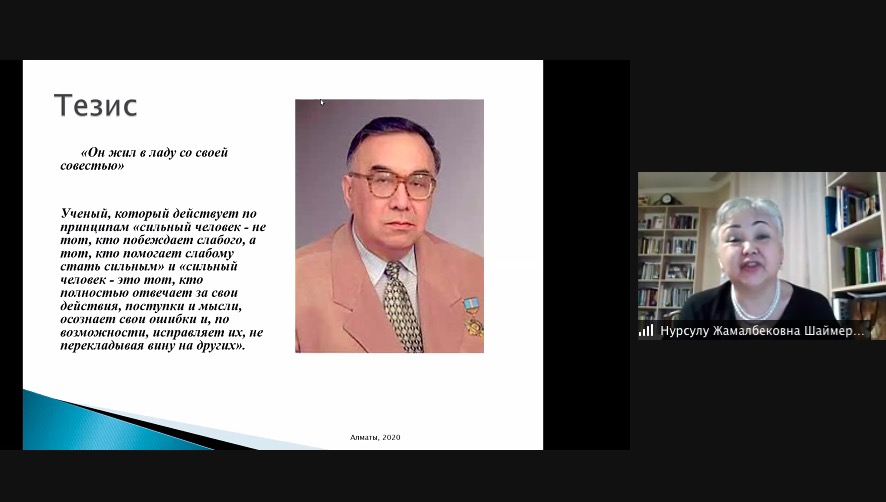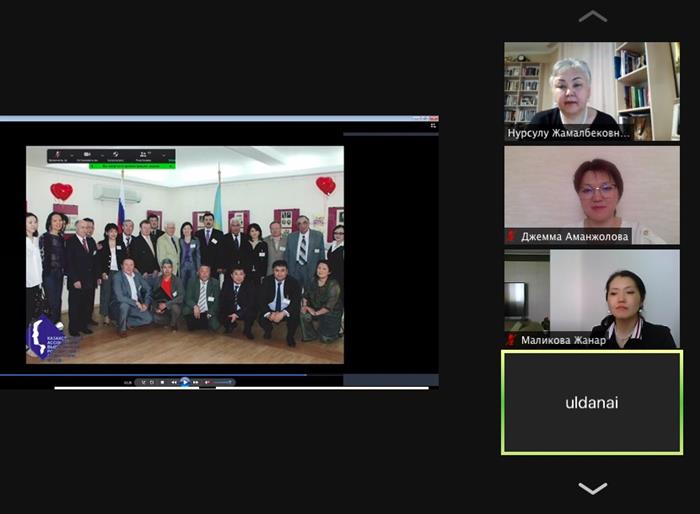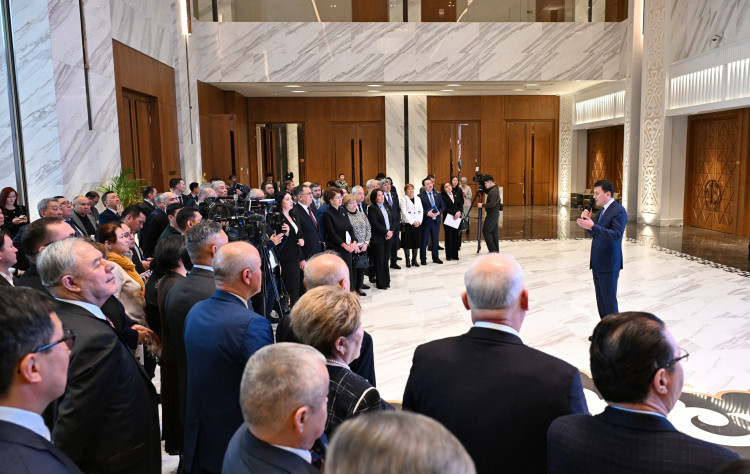“What ancient manuscripts are silent about”

On June 2, 2021, the laboratory “Sociolinguistics, Theory and Practice of Translation” of the Department of Foreign Philology and Translation with the support of KAZPRYAL (Kazakhstani Association of Teachers of the Russian Language and Literature), the Academy of Children’s Books “Altair”, the scientific and educational project “Epoch and Personality” held a round table called “What ancient manuscripts are silent about”, dedicated to the outstanding turkologist, Doctor of Philology, Professor Altay Sarsenovich Amanzholov.
Altay Sarsenovich Amanzholov was born on June 2, 1934 in Almaty. In 1957, he graduated from M. V. Lomonosov Moscow State University (Institute of Oriental Languages at Moscow State University) with a degree in “Turkic Philology”, where he also completed postgraduate studies and in 1963 defended his PhD thesis on “Verbal Management in the Language of Ancient Turkic Written Monuments”. In 1975, he defended his doctoral dissertation on “Materials and Research on the History of Ancient Turkic Writing”.
A. S. Amanzholov is one of the leading professors of Al-Farabi Kazakh National University. In 1979-1995, he headed the Department of General Linguistics and is currently continuing to work as a professor of this department.

A. S. Amanzholov is a major linguist-turkologist who has more than two hundred published works on Turkic philology and linguistics, including 7 monographs in Russian and Kazakh, two dozen publications in English and Turkish. He is a permanent leading speaker at international scientific conferences. In addition, Dr Amanzholov has trained three doctors and 18 candidates of science. Altay Amanzholov has been a Professor since 1978. Since 1995 he has been a full member (academician) of the Academy of Humanities of Kazakhstan, and since 2009 he has been an Honored Worker of Kazakhstan.
Honorary member of the Kazakh Society for the Protection of Historical and Cultural Monuments, Chairman of the section of Ancient Writing and Folklore (1976-1988), he successfully combines his scientific and pedagogical work with public activities to promote cultural monuments.
Other news
